The American Station Wagon
A Brief Packing and Styling Essay
by Harry Bradley
Published in Car Styling No. 8, October, 1974
For years, American station wagons have functioned reasonably well. At least up to the mid-1950’s. This, because wagons have always been based upon 4-door sedan configurations. 1940s and 1950s sedans were so big, tall and upright that the basic anatomy was ideal for spacious, useable wagons. A 1953 Chevrolet 210 Handyman which clearly demonstrates the practicality of early wagon designs. However, today’s wagons are nearly useless because today’s sedans are very low with severe tumblehome, extreme body pull under at the rocker panels, deep foot wells, pronounced wheel wells, and high driveshaft tunnels. Producing a wagon around these extremes is difficult-perhaps impossible. Moreover, many of the stylish, flamboyant tailgate arrangements currently available have further reduced useable space at the rear and have added impractical qualities with regard to ease of loading.
Over the past 20 years American wagons have developed along three distinctly different lines. First, the Country Club Wagon was long and low, with plenty of visual excitement, but not very functional as a part-time hauler. Mostly used by suburban mothers to chauffeur children around town, shop for groceries, and attend meetings. The 1960 Ford Country Squire exemplifies this type of vehicle. In fact, Ford was largely responsible for the erosion of the early spacious wagon package into today’s configuration. In many cases, these massive Cruisers have a stylish exaggeration that captures the very essence of American automotive design: abundance, useless bulk, flamboyance, gimmicks, and texture.
Second, the Compact Sport Wagon was new to the American market in the 1970s. This trend was effectively previewed by the 1955–1957 Chevrolet Nomad (or, prior to that, the 1954 Chevrolet Waldorf Nomad). As a package, this style is not too useful for other than very small loads. It had a clean, agile size which appeals to young people, small families and small businesses. The 1971 Vega Kammback exemplifies this type of wagon. It is not simply a shrunken big wagon, as the Pinto seems to be, but a design with proportions and accents specific to the sporty quality of a small wagon.
Third, the Suburban Van—an awkward compromise which utilizes the spacious, useable dimensions of the commercial van but retains the van’s difficult entry-exit configuration, commercial styling, and over-generous, ponderous mass. Favored mostly by larger families with extensive camping needs, used by mothers trucking children about the community, and popular with a small group of young people as the status car of the 1970s. The 1973 Dodge Sportsman exemplifies this type of wagon.
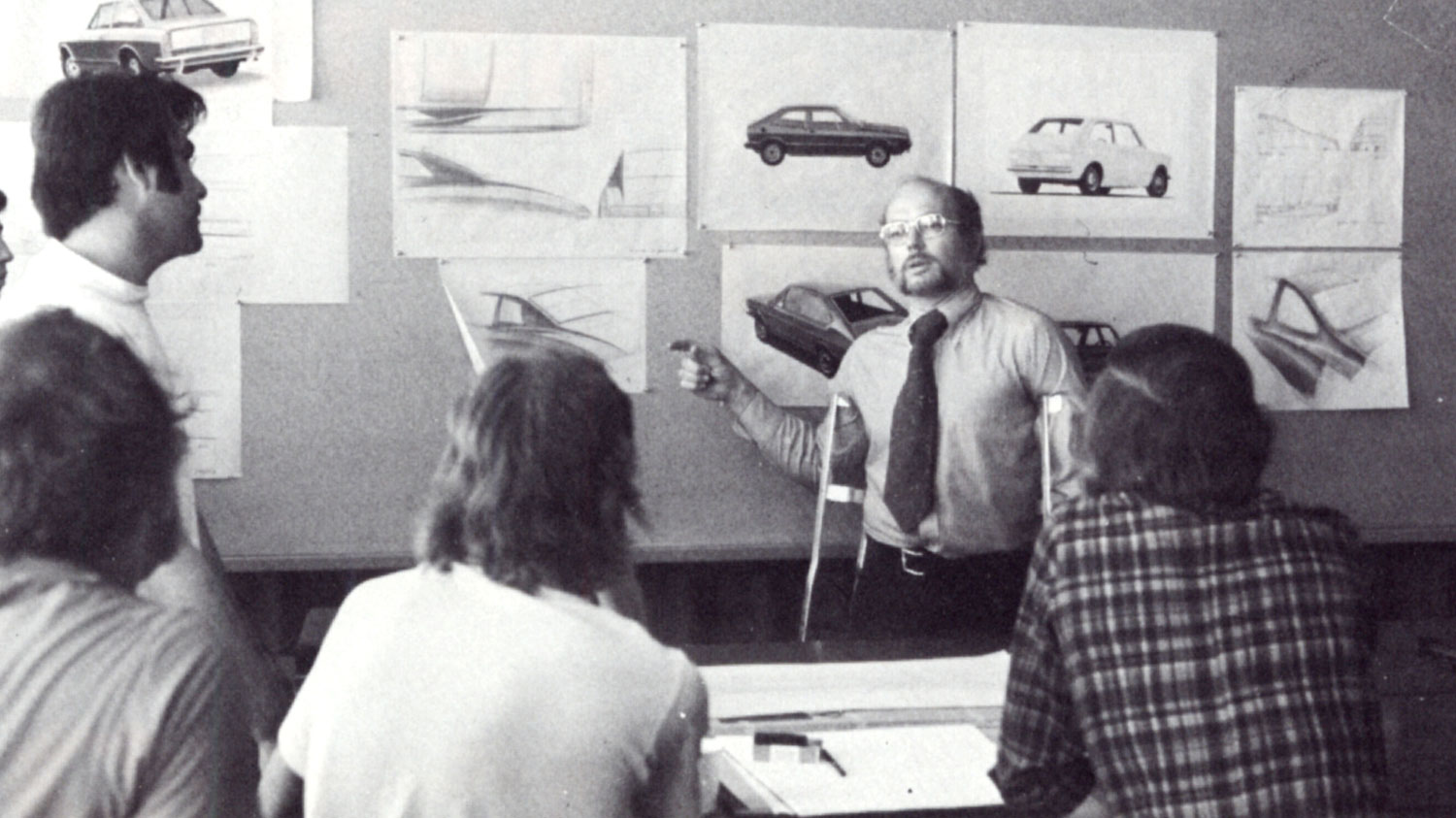
Harry Bradley graduated from the College of Wooster, Wooster, Ohio, in 1958, where he majored in the History of Oriental Religions and minored in Art. Four years later, he graduated from Pratt Institute, Brooklyn, New York. Here he majored in Industrial Design with particular emphasis upon Automotive Design.
He was hired by General Motors Styling Staff (now General Motors Design Staff) where his studio assignments included Truck and Coach Studio, various Advanced Studios, Chevrolet Studio, Pontiac Studio and Cadillac Studio. In these studios, Bradley participated directly in the design of production cars, trucks and buses, plus advance-concept cars, trucks and buses. He also worked briefly on fuel cell and battery powered experimental car programs for General Motors.
In 1964, he was granted a one year leave-of-absence and, on a full tuition General Motors Fellowship, attended Stanford University, where he received a Masters Degree. His thesis at Stanford was in the area of Lower Extremity Orthotics having designed a pair of bi-lateral long leg braces known as the Stanford-Bradley Brace.
In 1967, Bradley moved to Mattel Toys, Los Angeles, California, where he was a Senior Industrial Designer in the Research and Development Deportment. There he designed the original series of Hot Wheels.
By 1968, he had formed Bradley Design, Palos Verdes Peninsula, California. Bradley Design concentrates on automotive assignments: styling, engineering, human factors, marketing and advertising. Work is done in all automotive categories from recreational, commercial and specialty to off-road and racing.
Bradley’s automotive illustrations have appeared in nearly every American automotive publication and have been employed in automotive catalogs and brochures. Vehicle design includes Indianapolis race cars, land speed record cars, various classes of dragsters plus recreational vehicles of all kinds, cars for movie and TV studios, and agencies, and private industry. He has designed products for handicapped persons including vehicles and appliances. Clients include major automobile companies world-wide, toy companies, automotive accessory and high-performance manufacturers and nearly all automotive publications. Articles about Harry Bradley and his work have appeared in Newsweek, Time, Life and newspapers throughout the United States.
Since 1959, Harry Bradley has been on the faculty of Art Center College of Design, Los Angeles, California. He is an instructor in the Industrial Design Department, where he teaches Advanced Product Design and Advanced Automotive Design. He has been a guest lecturer at U.C.L.A., Los Angeles, California, and has appeared on television and radio programs.

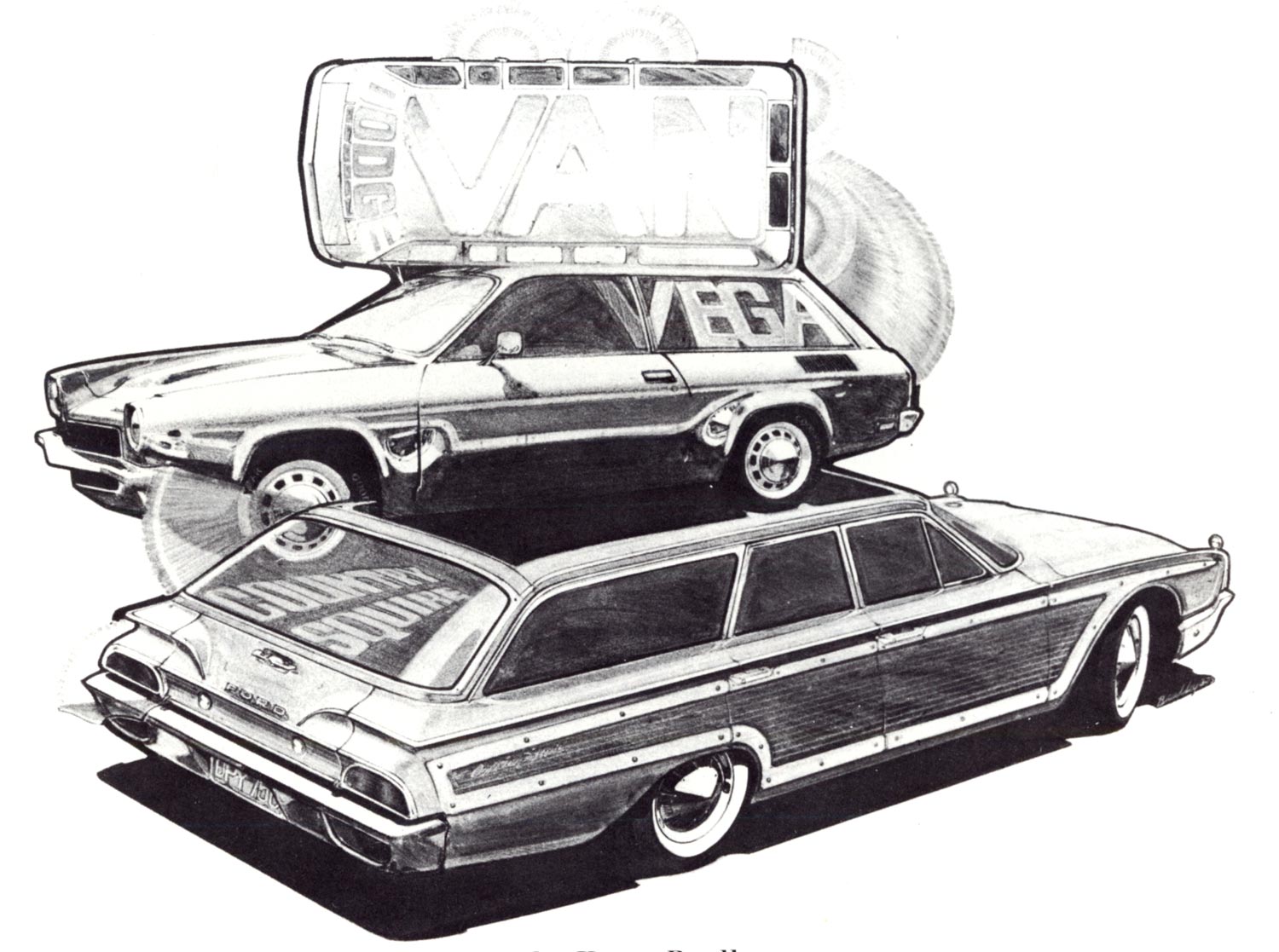
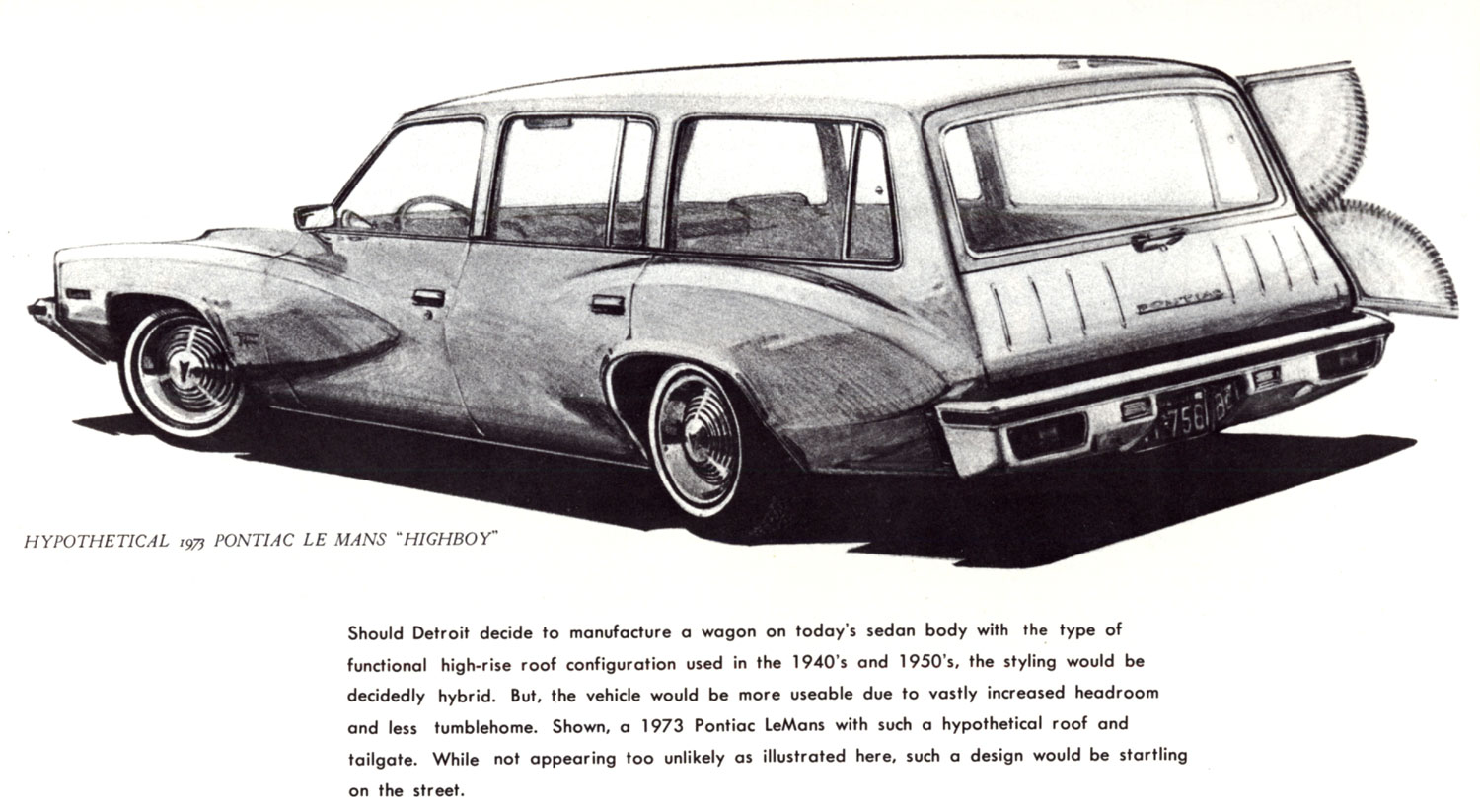
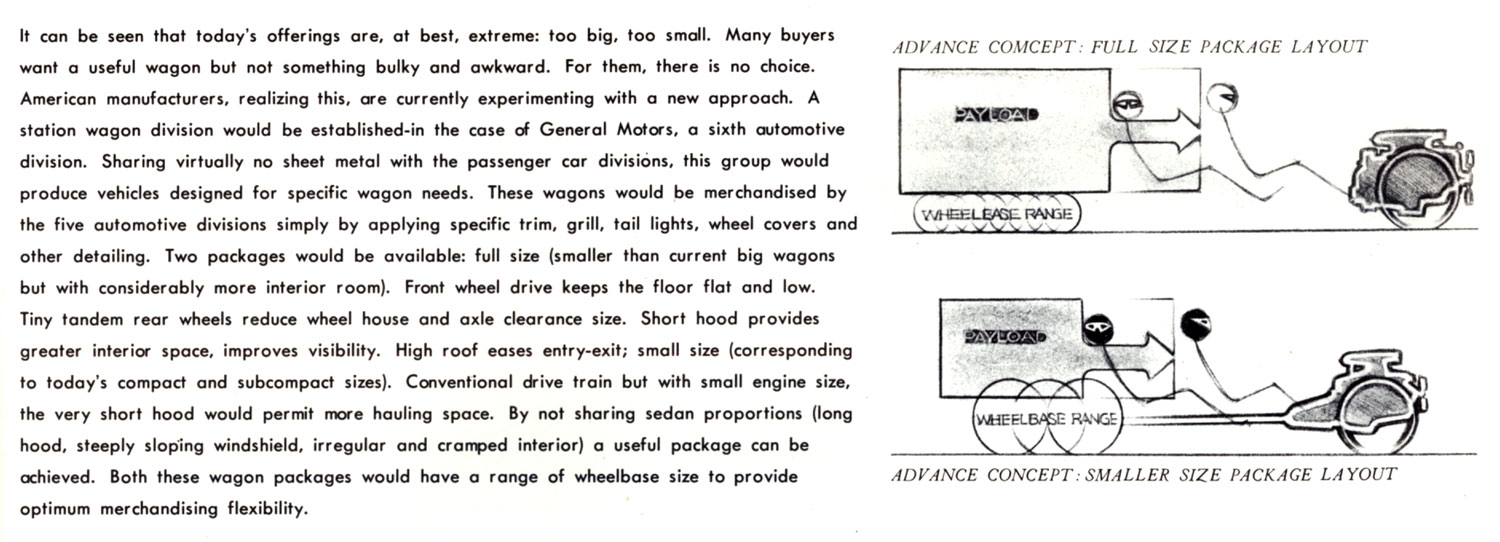
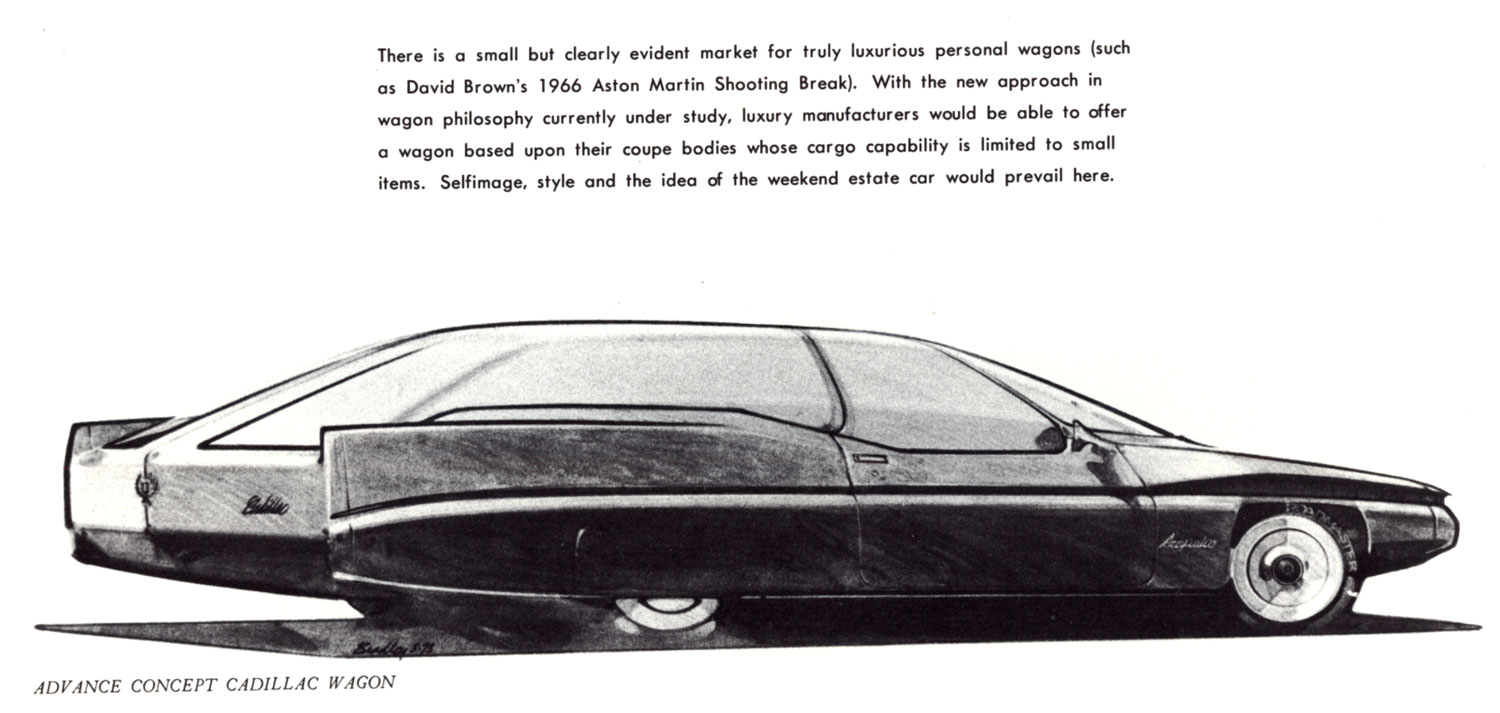
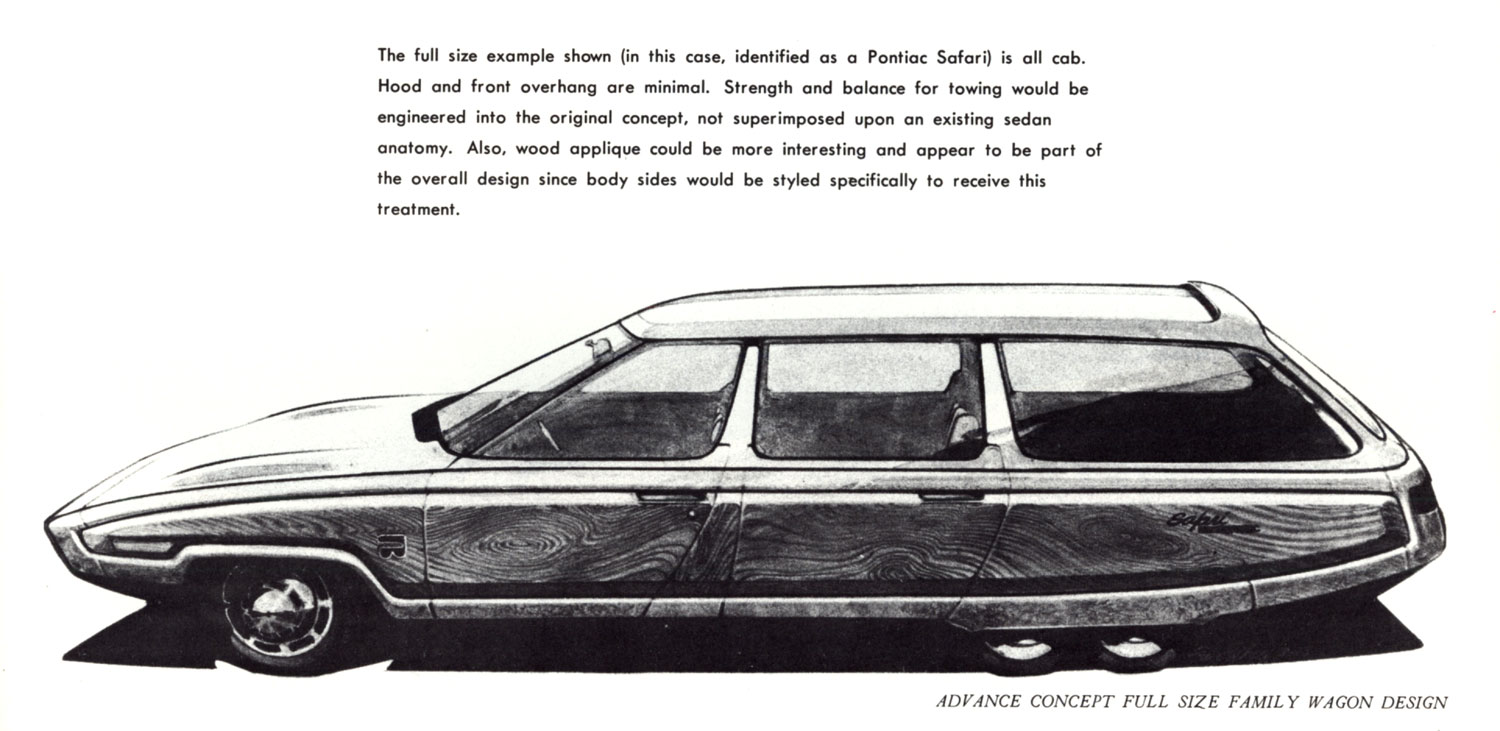
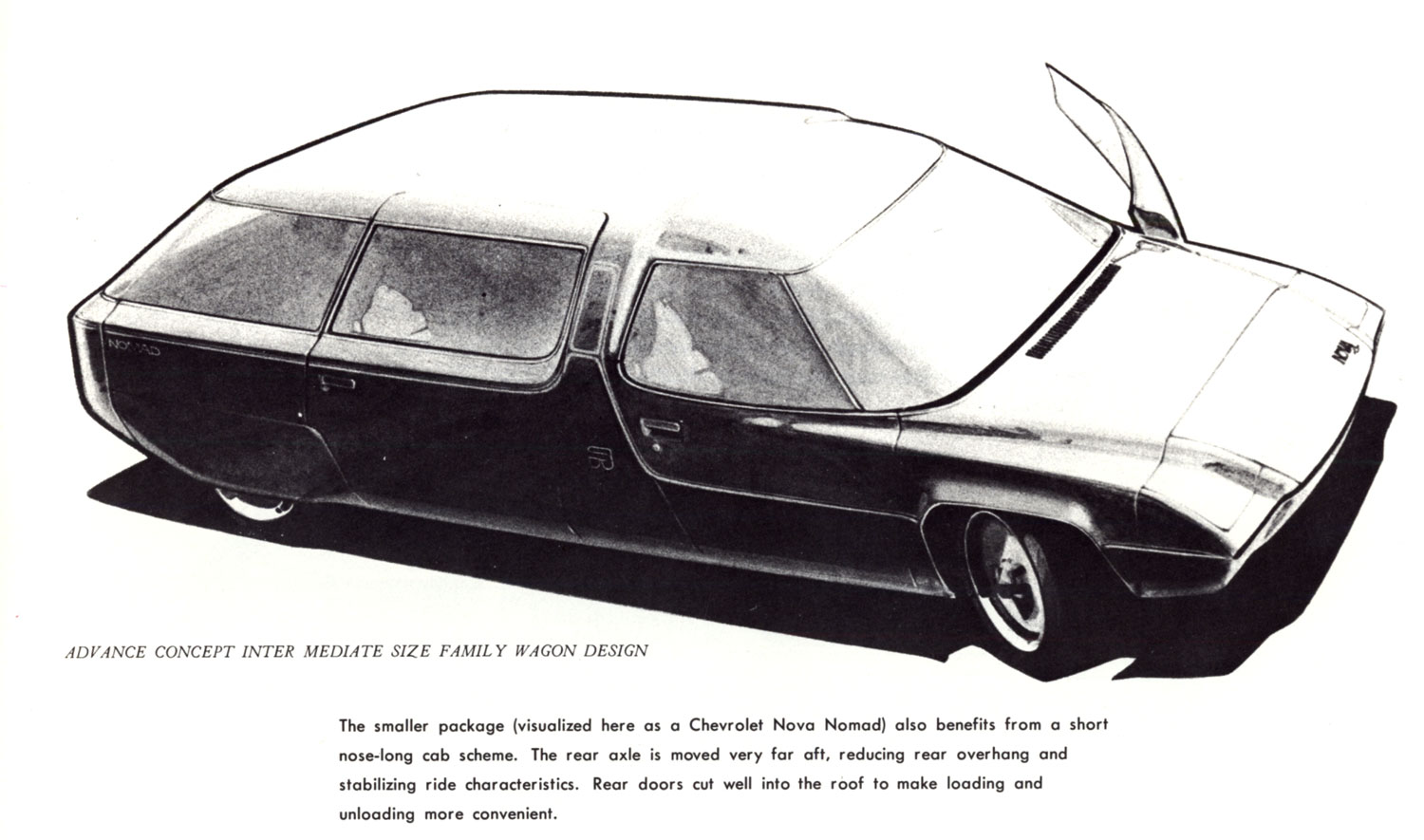
Harry’s Nova Nomad design is remarkably close to what we now call a minivan, though moving the rear axle far back might have reduced convenience in loading and carrying wide objects. Still. When Chrysler actually produced it, after Ford took a pass on the idea, sales volume, if I recall, was an immediate 400,000.
Did Harry get a royalty check?
The 1962-1965 Chevrolet Nova Station Wagons, as well as the 1961-1963 Pontiac Tempest, Oldsmobile F-85 and Buick Special Y-body station wagons were the right size, but conventional. They could have been the foundation for a front-engine mini-van, but G.M. was not ready to go to unit bodies and front-wheel drive. A better-developed Buick V-6 would have been perfect as a base power plant. I guess G.M.’s technology thinking at that time was to develop the Toronado drive-train package first.
One of my first exterior design programs was to design a competitive design to Chrysler’s anticipated FWD minivan. I was working on the interior for GM’s first FWD car the Citation-at the time, when management decided we better get going on an exterior for a minivan. Well we put one together pretty quickly and we’re just preparing to start releasing surface to engineering when our corporate intelligence guys told us that Chrysler had cancelled their minivan program! (This of course turned out to be bad intelligence) So, of course we were told to scrap the program too. Well it would be several years of watching the amazing success of the Chrysler/Dodge mini van before GM got their own mini van program going again which never did match the popularity of the Chrysler fold flat rear seats design.
I have the final version of the Vega “H” body wagon. My 1978 Pontiac Sunbird Safari Sport wagon. Only made 8,000 total for 78-79. I love the car. I used parts from The 1976 Vega Nomad package to make a “Nomad-Safari” look to the B pillar and applied a tow tone silver paint using 1978 Bonneville colors. It turns heads at the car shows.
reClark Lincoln- When I returned to GM in 1973, I saw the Citation-based minivan fiberglass model in the hall, and thought it was brilliant. The guys I knew in California were using cab-forward short vans for recreation already.
I was told later that a GM board member thought that vans would hurt station wagon sales!!!! uh…yeah! I have always liked the ’55 Chevy Nomad since I don’t need or use large hauling capacity, and like the style. The Vega wagon was also a good design. I worked on the last big wagon, ’91 Caprice- it can hold a 4X8, but went away like the other wagons.
The GM Design proposed FWD program was adopted by the corporation, it resulted in the X-Car that went across the board with the exception of Cadillac. Cadillac wanted the Chevrolet two door notch back coupe exclusively, the price leader for Chevrolet. Probably the best looking car in the proposed Chevolet line, Chevrolet would not give it up, Cadillac wanted to make a high performance four passenger sport version out of it. It was soon dropped by Chevrolet and disappeared.
The very early GM Customer Clinic work included a FWD minivan with two possible lengths, one with added room in the rear seat area. The program was so massive and costly that GM had to borrow money for the first time in it’s history and in spite of outstanding clinic results decided not to enlarge the debt by doing the minivan component of the program
The clinic results accross the country were so good that the newly initiated customer testing program was suspect. Because it was new it was not trusted for another very large investment. A prototype mini-van design built by Fisher Body was phographed by Automotive News at the GM Proving Ground and it inspired Chrysler who was also getting into FWD. It took them eight years to bring theirs out.
GM finally followed with the Lumina APV off of the long FWD version that was the A-Car platform. Unfortunately engineering went with the Fiero type plastic panels. They missed the weight target, the fuel economy target and the cost target. The Lumina and other divisional clones are now cult cars.
So-called “SUV’s” are a waste. Station wagons do almost everything they do better.